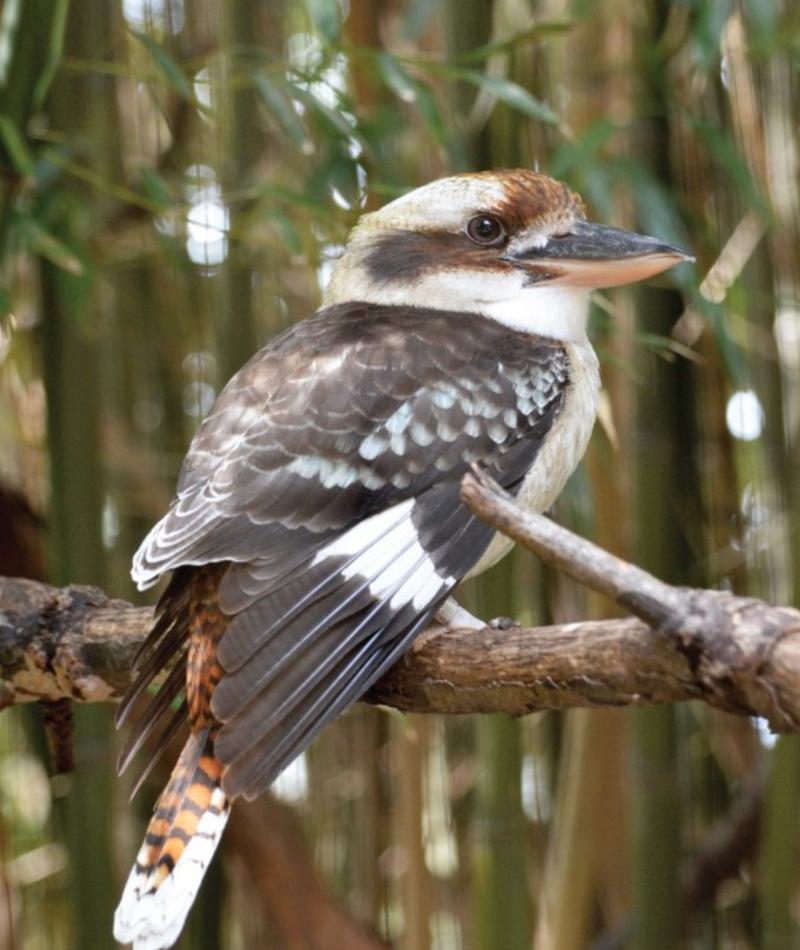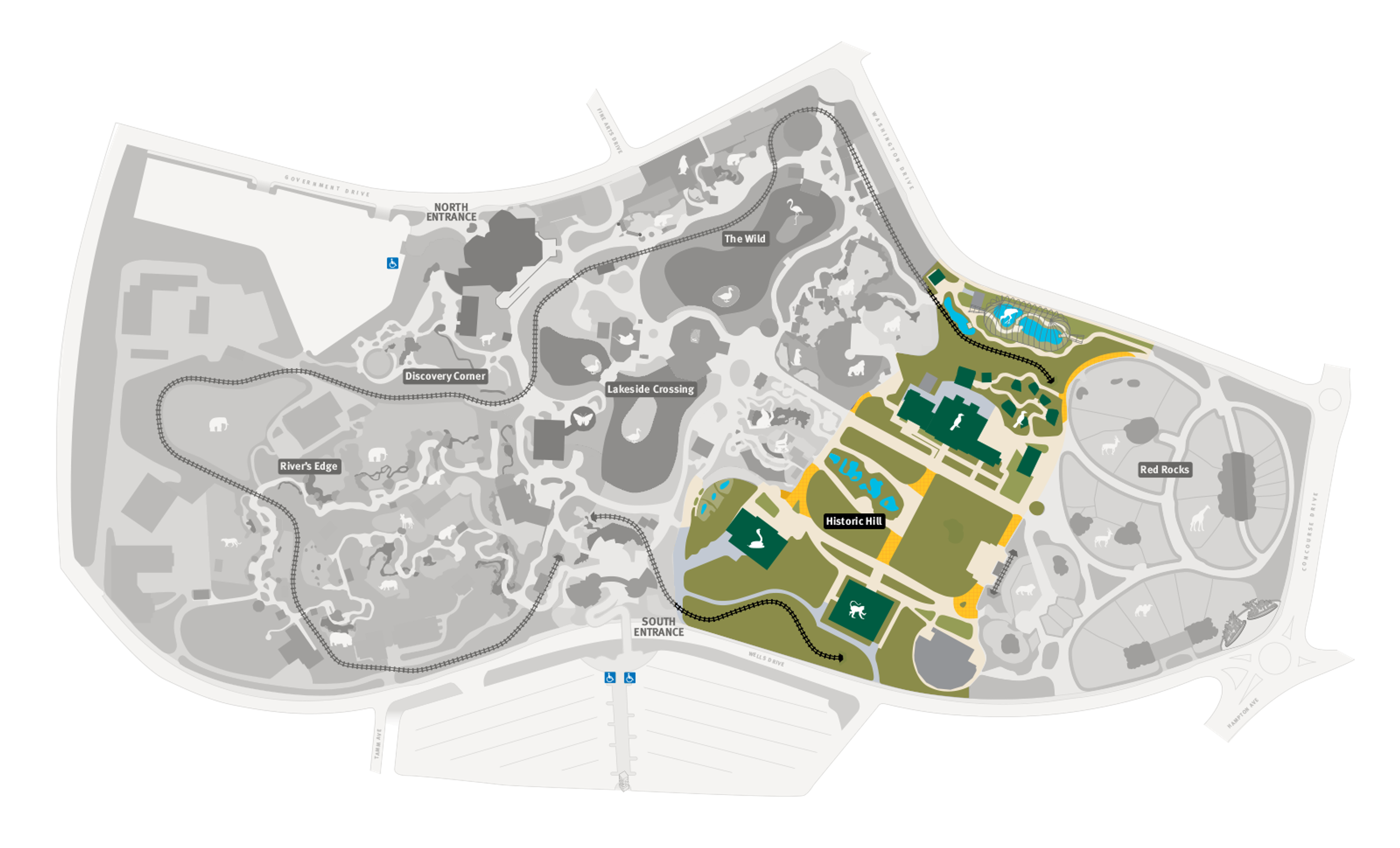
Laughing Kookaburra
Dacelo novaeguineae
Did you know?
- Laughing kookaburas are a part of the Alcendinidae family, which they share with other kingfishers.
- Their daily calling is so regular it's known as the "bushman's clock."
- They live across in woodlands, bushlands, and towns in Australia.
- They are the largest kingfisher.
- A female can lay up to five eggs in a clutch.
Adaptations
Laughing kookaburas’ large size allows them to eat on a range of animals, some quite large! They have been known to prey on three-foot-long venomous snakes by whacking them against trees or dropping them from high above ground. Their plain coloration helps them camouflage in the trees, while their varied, and sometimes loud, vocalizations allow them communication about many different important topics, such as threats, food and courting. Their cackling calls can be heard over great distances, where they are usually raised in a loud chorus of crazy "laughter" at dawn and dusk. In fact, the kookaburra's daily calling habits are so regular that in parts Australia it's known as the "bushman's clock."
Young and Family
Kookaburras typically mate for life and live in extended family groups, with juveniles assisting with chick rearing. They usually occupy the same territory year-round, and they nest in hollow trees, termite nests, or nooks and crevices of buildings. Older offspring often act as “nest helpers,” bringing insects, reptiles and small mammals to the current nestlings.
Threat Level
- Unknown
- Common
- Near Threatened
- Threatened
- Endangered
- Critically Endangered
- Extinct in the Wild
Common
The Laughing Kookaburra is widespread and abundant.
Range
Australia
Habitat
Open woodland, forests, farmlands, orchards, towns

We care about laughing kookaburras
The Saint Louis Zoo participates in the Species Survival Plan® for laughing kookaburras. This is a cooperative breeding program, with a number of zoos working together to ensure the survival of the species. We also support them in the Bird House at the Zoo. Learn more about how we are helping wildlife around the world: Dedicated to Conservation
Find this animal in Historic Hill

SAINT LOUIS ZOO ZONE
Historic Hill
Historic Hill is a lovely stroll through one of the oldest parts of the Saint Louis Zoo. From the 1904 World’s Fair Flight Cage to the Spanish architectural flavor of the 1920s in the Bird House, Primate House and Herpetarium to the finishing touches of our thoroughly modern exhibits, this area of the Zoo has a unique ambiance and a nostalgic history that make it a great destination.

